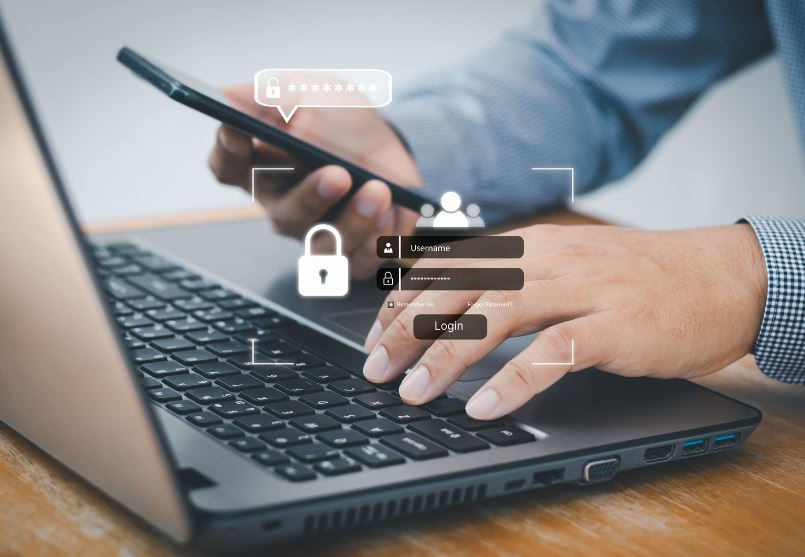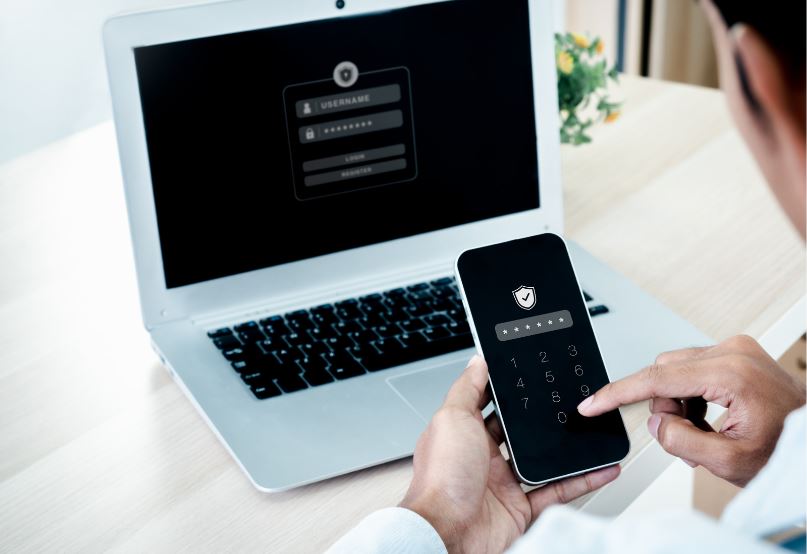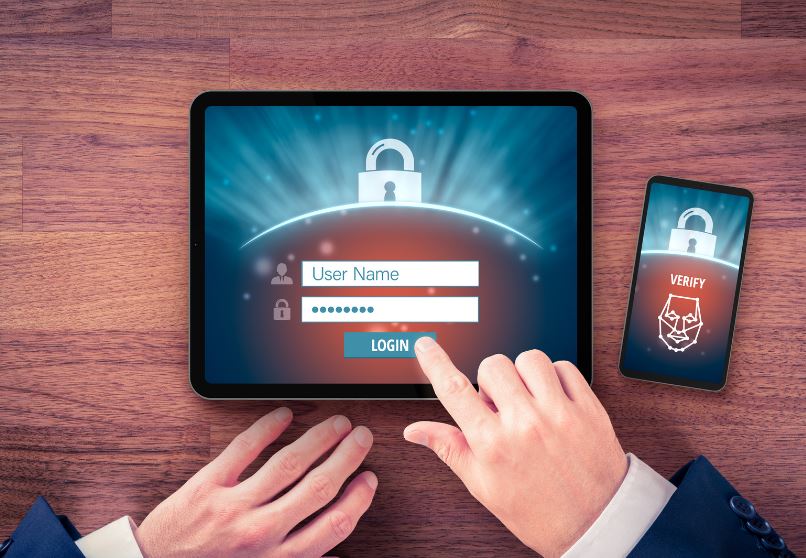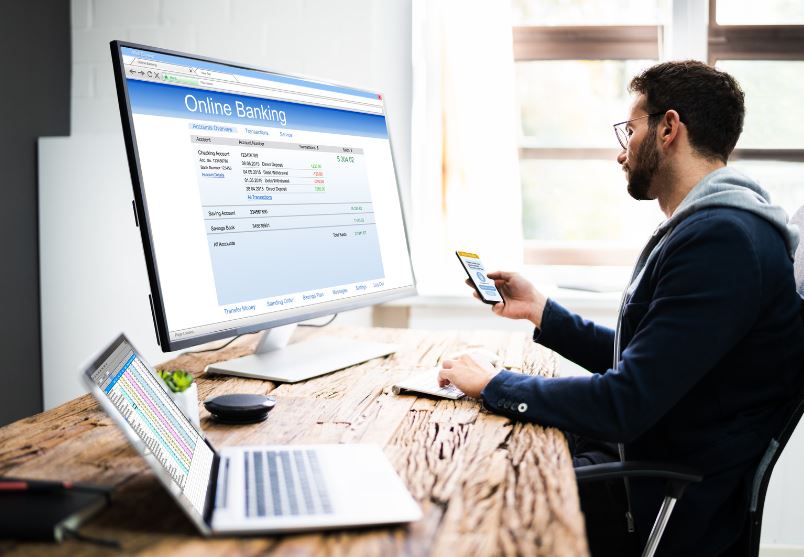In today's digital landscape, protecting sensitive information and securing online accounts is of utmost importance. One powerful tool that helps fortify digital security is multi-factor authentication (MFA). By adding an extra layer of verification, MFA significantly enhances the security of your digital fortress.

The Importance of Multi-Factor Authentication
Multi-factor authentication is a method of verifying a user's identity by combining multiple factors or credentials. It adds an extra layer of protection beyond just a username and password. The importance of implementing MFA cannot be overstated, especially in an era where cyber threats are becoming more sophisticated.
With the prevalence of data breaches and the increasing sophistication of hackers, relying solely on passwords for security is no longer sufficient. Passwords can be easily compromised through various means, such as phishing attacks or brute-force attempts. By implementing MFA, businesses can significantly reduce the risk of unauthorized access and protect sensitive information.
How Multi-Factor Authentication Works
The concept behind multi-factor authentication is to require users to provide multiple forms of identification, known as factors, to prove their identity. These factors fall into three main categories:
- Something You Know: This factor requires the user to provide information that only they should know, such as a password, PIN, or answers to security questions.
- Something You Have: This factor involves possessing a physical device or token, such as a smartphone, hardware token, or smart card, that generates a unique code or provides a one-time password.
- Something You Are: This factor utilizes biometric data unique to an individual, such as fingerprints, facial recognition, or voice recognition.
Combining two or more factors in multi-factor authentication ensures that even if one factor is compromised, the attacker would still need access to the other factor(s) to gain unauthorized entry.
Implementing multi-factor authentication typically involves integrating authentication factors into the login process. For example, after entering a username and password, the user may be prompted to provide a one-time verification code generated by a mobile app or sent to their registered email address. This additional step adds an extra layer of security by requiring a physical device or a secondary piece of information.
Implementing multi-factor authentication significantly reduces the risk of unauthorized access and protects sensitive information from compromise. It is a robust strategy for fortifying digital security and defending against potential cyber threats.

Factors of Multi-Factor Authentication
Multi-factor authentication (MFA) adds an additional layer of security to your digital fortress by requiring multiple factors to verify your identity. These factors fall into three main categories: something you know, something you have, and something you are.
Something You Know
The "something you know" factor refers to information that only the authorized user should know. This typically involves a password, PIN, or a secret answer to a security question. By requiring users to provide this knowledge-based factor in addition to their username, it helps prevent unauthorized access even if the username is compromised.
To ensure the strength of the "something you know" factor, it's important to follow best practices for creating strong passwords.
Something You Have
The "something you have" factor involves a physical or digital item that the user possesses. This could include a smart card, key fob, mobile device, or a hardware token. These devices generate a one-time passcode or provide a unique identifier that is used for authentication.
One common method of implementing the "something you have" factor is through the use of mobile authenticator apps. These apps generate time-based or event-based passcodes that are synchronized with the authentication system. The user enters the passcode along with their username and password to complete the authentication process.
Something You Are
The "something you are" factor is based on biometric characteristics unique to an individual. This factor includes fingerprint or iris scans, voice recognition, or facial recognition. Biometric authentication provides a high level of security as it is difficult to replicate or imitate these unique physical attributes.
Implementing the "something you are" factor requires securely storing and encrypting biometric data to protect user privacy. Additionally, having backup authentication methods is crucial in case biometric data cannot be captured or recognized under certain circumstances.
Combining these factors in multi-factor authentication enhances businesses' security posture and defends against unauthorized access. Each factor adds an extra layer of defense, increasing the difficulty for attackers to bypass authentication. It's crucial to select the right combination of factors considering the sensitivity of protected information and usability needs of users.
Implementation of Multi-Factor Authentication
To effectively implement multi-factor authentication (MFA) for your digital security, it's important to understand the different types of authentication factors and the common methods used for MFA.
Types of Authentication Factors
Multi-factor authentication typically involves using a combination of three types of authentication factors:
- Something You Know: This factor relies on information that only the user should know, such as a password, PIN, or answers to security questions. It is the most common and widely used authentication factor.
- Something You Have: This factor involves possessing a physical item that serves as proof of identity. Examples include a smart card, security token, or a one-time passcode (OTP) generated by a mobile app or hardware device.
- Something You Are: This factor utilizes biometric characteristics unique to the individual, such as fingerprints, voice patterns, or facial recognition. Biometric authentication provides a high level of security but may require specialized hardware or software.
Combining two or more factors in multi-factor authentication (MFA) adds an extra layer of security, significantly increasing the difficulty for unauthorized individuals to access your digital accounts or systems.
Benefits of Multi-Factor Authentication
Implementing multi-factor authentication (MFA) brings numerous benefits to your digital security. By adding an extra layer of protection, MFA enhances security measures and provides protection against unauthorized access. Let's explore these benefits in more detail.
Enhanced Security
One of the primary advantages of multi-factor authentication is the enhanced security it provides. Traditional password-based authentication can be vulnerable to various threats, such as phishing attacks, social engineering, and password breaches. However, with MFA, even if your password is compromised, unauthorized access is significantly more difficult.
MFA requires multiple factors to verify the identity of the user, typically combining something the user knows (like a password), something the user has (like a mobile device or security token), and something the user is (like a fingerprint or facial recognition). This multi-layered approach significantly reduces the risk of unauthorized access, as an attacker would need to possess multiple factors to breach the account.
Implementing MFA helps businesses bolster their security posture and protect sensitive data, thereby reducing the likelihood of data breaches and unauthorized access.
Protection Against Unauthorized Access
Multi-factor authentication provides an additional safeguard against unauthorized access to your digital accounts or systems. With MFA, even if an attacker manages to obtain a user's password, they would still need to provide the additional authentication factor to gain access.
This additional layer of protection acts as a deterrent to potential attackers, making it significantly more difficult for them to bypass the authentication process. It adds an extra barrier that helps prevent unauthorized individuals from gaining access to sensitive information, systems, or services.
Implementing MFA enables businesses to better protect sensitive data, intellectual property, and customer information. It also aids in meeting compliance requirements and building trust with customers and partners.
Overall, multi-factor authentication is a powerful tool for fortifying your digital security. It provides enhanced protection against unauthorized access and helps businesses safeguard their valuable assets. By implementing MFA, organizations can reduce the risk of data breaches and bolster their overall security posture.

Challenges and Considerations
While multi-factor authentication (MFA) provides an added layer of security for digital systems, there are a few challenges and considerations that organizations should be aware of when implementing MFA. These include user experience and management and administration.
User Experience
One of the primary challenges of implementing multi-factor authentication is ensuring a seamless user experience. While the goal is to enhance security, it's important to strike a balance between security measures and user convenience. If the authentication process becomes too complex or time-consuming, users may become frustrated and resistant to using MFA.
To address this challenge, organizations should carefully select authentication factors that are both secure and user-friendly. Factors such as biometrics (something you are) or push notifications to mobile devices (something you have) can provide a convenient and frictionless user experience. Additionally, organizations should provide clear instructions and resources to help users understand the importance of MFA and how to navigate the authentication process smoothly.
Management and Administration
Managing and administering multi-factor authentication can present its own set of challenges. Organizations need to consider the scalability and maintenance of the MFA system as the number of users and applications grow. Additionally, the integration of MFA with existing systems and applications may require additional resources and technical expertise.
To effectively manage MFA, organizations should have dedicated staff or teams responsible for overseeing the implementation, configuration, and maintenance of the MFA system. This includes managing user access, revoking access when necessary, and ensuring that the system is up-to-date with the latest security patches and protocols. Regular monitoring and auditing of the MFA system can also help identify and address any vulnerabilities or issues in a timely manner.
Carefully addressing the challenges and considerations associated with multi-factor authentication (MFA) allows organizations to maximize security benefits while minimizing disruptions to user experience and administrative processes. Thoughtfully implementing MFA helps protect sensitive information and prevents unauthorized access to digital systems.

Educating Users on the Importance of Multi-Factor Authentication
User education plays a pivotal role in the successful implementation of MFA. It is essential to raise awareness among users about the benefits of MFA and the role they play in safeguarding sensitive information. Here are some key points to communicate:
- Security Awareness: Educate users about the increasing sophistication of cyber threats and the importance of protecting their accounts. Highlight real-world examples of data breaches and the consequences of weak authentication practices.
- MFA Benefits: Explain the advantages of MFA, such as an additional layer of security, reduced risk of account compromise, and protection against unauthorized access. Emphasize that MFA is an additional measure to enhance security, not a replacement for strong passwords or other security measures.
- Step-by-Step Setup: Provide clear instructions on how to enable and set up MFA for different applications and services. Include screenshots or videos to guide users through the process. Offer support and assistance to address any concerns or difficulties users may encounter during the setup.
Regularly reinforce the importance of MFA through training sessions, security awareness campaigns, and internal communications. It is vital to create a culture of security within your organization.
Choosing the right authentication factors and educating users on the significance of MFA significantly enhances the security of your digital fortress. Implementing MFA as part of your overall security strategy helps protect against unauthorized access and strengthens defenses against evolving cyber threats.

Strengthen Your Defense with LK Tech!
Protect your business from unauthorized access with LK Tech's advanced cybersecurity solutions. As a leading provider of cybersecurity services in Cincinnati, we prioritize security measures that go beyond passwords.
Ensure robust protection for your sensitive data and systems. Contact LK Tech today to fortify your business with proactive cybersecurity solutions that prioritize your security.


